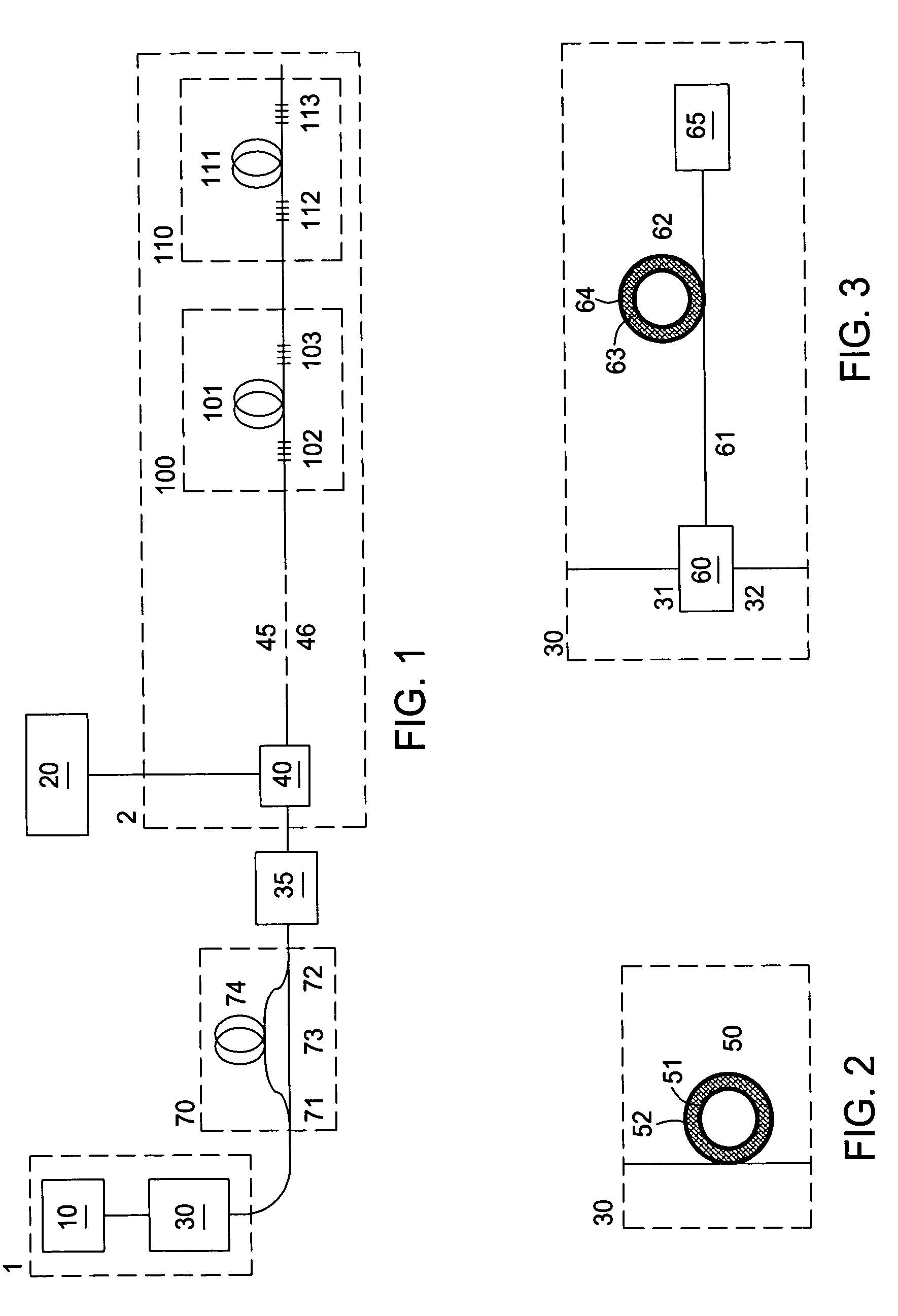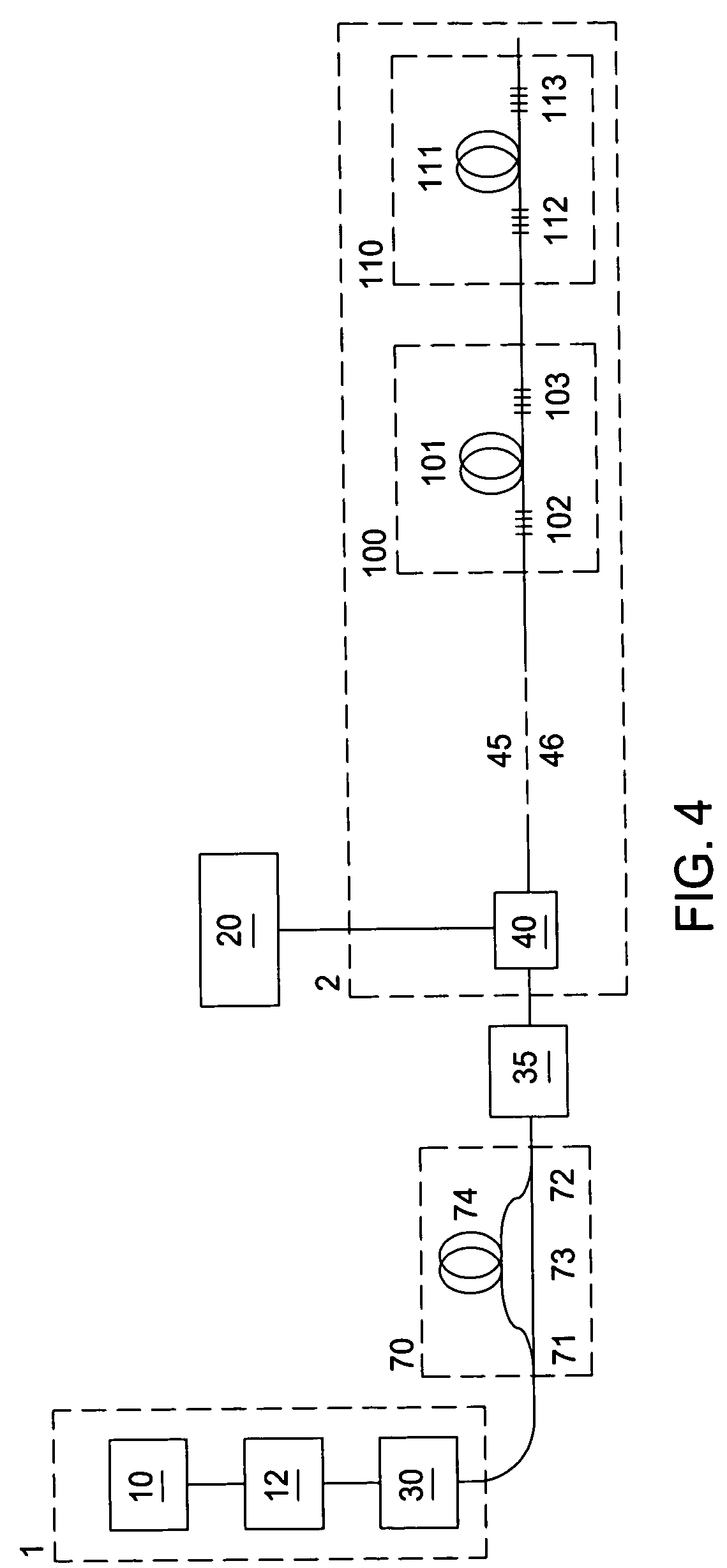Active coherence reduction for interferometer interrogation
a technology of active coherence and interferometer, which is applied in the direction of converting sensor output, measuring devices, instruments, etc., can solve the problems of adding noise to the signal of sensors with sensor delays, and achieve the effect of confined peak in the coherence function, uniform optical spectrum spread, and broadened optical spectrum
- Summary
- Abstract
- Description
- Claims
- Application Information
AI Technical Summary
Benefits of technology
Problems solved by technology
Method used
Image
Examples
Embodiment Construction
[0047]The combination of a low coherence source and a compensating interferometer may also be used in systems employing continuous wave (CW) source interrogation rather than pulsed source interrogation. If a compensating interferometer is used in combination with a phase generated carrier (PGC) technique, the PGC cannot be induced by modulating the source directly. However, it may be induced by a phase modulator placed in one of the arms of the compensating interferometer, or by modulation of the optical frequency of the light between the output of the compensating interferometer and the input to the lead fiber. The PGC can also be generated by modulating the delay in one of the interferometer arms, provided that these positions are accessible.
[0048]A basic idea of the present invention is to modulate the complex field amplitude of the signal interrogating an optical interferometer in such a way that the temporal coherence is reduced, thus reducing the sensitivity to unwanted reflec...
PUM
 Login to View More
Login to View More Abstract
Description
Claims
Application Information
 Login to View More
Login to View More - R&D
- Intellectual Property
- Life Sciences
- Materials
- Tech Scout
- Unparalleled Data Quality
- Higher Quality Content
- 60% Fewer Hallucinations
Browse by: Latest US Patents, China's latest patents, Technical Efficacy Thesaurus, Application Domain, Technology Topic, Popular Technical Reports.
© 2025 PatSnap. All rights reserved.Legal|Privacy policy|Modern Slavery Act Transparency Statement|Sitemap|About US| Contact US: help@patsnap.com



